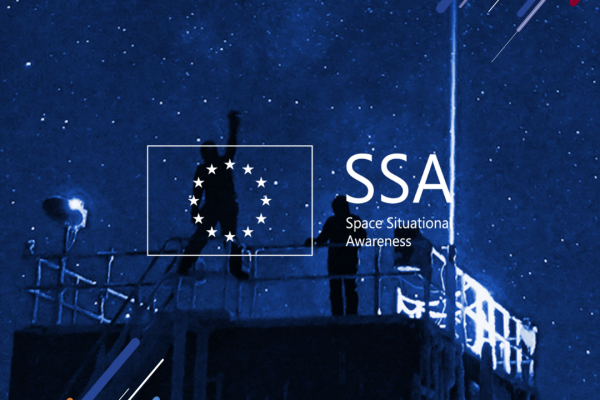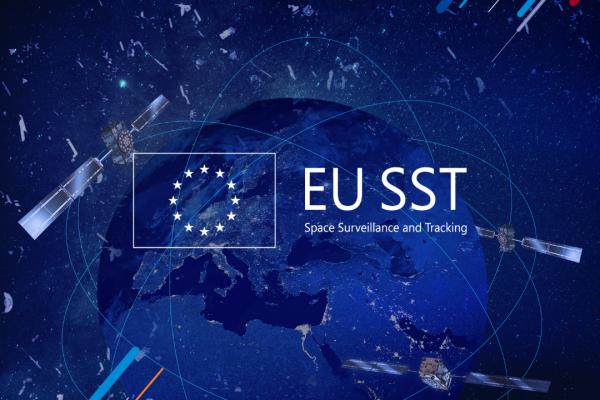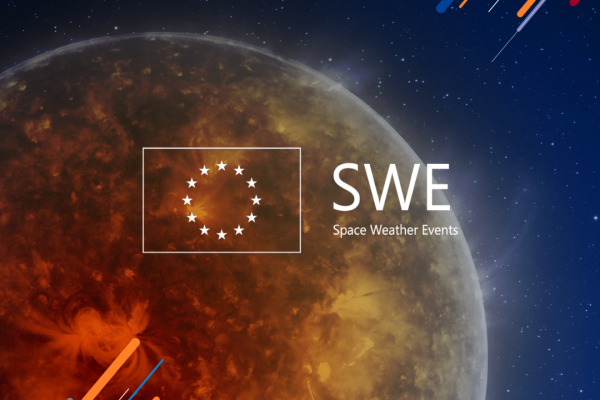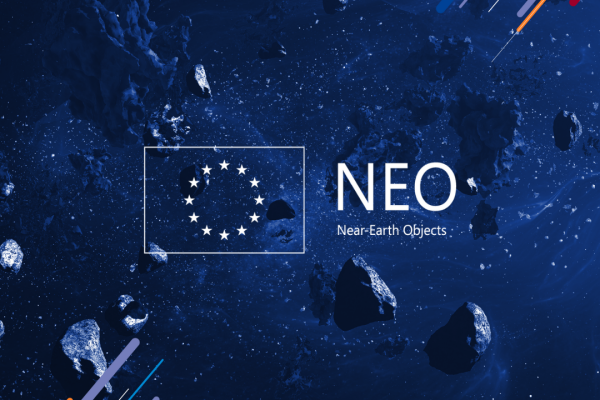Why is this relevant?
The number of satellites and debris in space is steadily increasing due to reusable launch vehicles, smaller satellites, and a growing number of private and public space actors.
The resulting congestion in space puts the security and resilience of EU and Member States space assets at risk: The likelihood of a satellite being severely damaged or destroyed in a collision is expected to increase dramatically if no action is taken.

STM encompasses the means and the rules to access, conduct activities in, and return from outer space safely, sustainably, and securely.
What is STM?
In light of an increasingly congested space, maintaining space as a resource for future generations becomes increasingly essential. The EU approach for Space Traffic Management (STM) therefore aims at keeping space operations safe, space orbits usable, and space accessible for decades to come while supporting andstrengthening the competitiveness of the EU industry.
The EU STM approach therefore calls for an EU contribution to a global challenge along four avenues.
The Council of the EU, the European Parliament and the European Economic and Social Committeeunderlined the importance of and voiced their support for the EU STM approach in relevant Council Conclusions, EP Resolutions and EESC opinions.

How is the EU STM approach implemented?
The EU STM approach proposes ten actions, several of which call for fora in which experts develop together with the Commission, the High Representative and other EU and European bodies commonly agreed solutions to STM.
Mirroring the four avenues of the EU STM approach, the Stakeholder Mechanism on Space Traffic Management(STM) brings together the fora called for in the EU STM approach into one comprehensive structure.
The STM stakeholder mechanism therefore consists of one main groupand four subgroups which meet on a regular basis to gather inputs, ideas, and contributions to implement the ten actions outlined in the EU STM approach.

STM requirements
EU (and Norwegian) civilian space operators and the European Defence Agency aggregating input of EU military space operators meet 2-3 times a year to gather STM requirements of both communities. While the group is still busy aggregating STM operator requirements, their input already shapes and informs EU policymaking and engagement.
To learn more about their work, check out Space Traffic Management stakeholder mechanism (europa.eu) and navigate to STM subgroup 1.

Operational capabilities
Monitoring space traffic is key to keep space assets safe. This is why EU Space Surveillance and Tracking (SST) with its sensor network, processing capabilities and services is the operational backbone of the EU STM approach.
EU SST also supports the development of EU industrial SST capabilities. This helps to boost the competitiveness and innovation of theEU SST private sector, support the rapidly growing demand for anddevelopment of new SST services, and improve and consolidate the autonomy of EU SST in all orbit regimes beyond the network of existing national assets.
To do that, the Commission launched together with the EU SST Partnership the EU Industry and Start-ups Forum on STM (EISF) (STM subgroup 2) in which EU stakeholders incl. start-ups, SMEs, midcaps and large companies (and some EU research and technology organisations) jointly define research and development priorities for the Union’s space surveillance and tracking domain.

|
Regulatory aspects
Preparations for setting up the consultation forum on STM regulatory aspects are ongoing.
To prepare the ground, DG DEFIS has been carrying out a range of activities:

- The rise of importance of Space Traffic Management (STM) – Pilot Project on STM Final Report
- Building a common EU approach on STM – conference with MEP Marinescu
- EU Space Label study - Final Report
- EU Space Label study - Executive Summary
- EU Space Label study – Event Report
- Supporting standardisation in the field of Space Traffic Management – presentation of the EU Space Label study report
International level
Preparations for setting up the consultation forum on the STM international level are ongoing.
To prepare the ground, DG DEFIS has been carrying out a range of activities.
Cooperation with the United Nations Office for Outer Space Affairs (UNOOSA)

- Pact for the Future, Global Digital Compact and Declaration on Future Generations
- DG DEFIS’ attendance of UNOOSA conference on ‘management and sustainability of Outer Space Activities
- UN Space Sustainability Days 2025 Event Report
- UN Space Sustainability Days
Latest News

- Highlighted
Three years ago, on 26 April 2022, the Commission (DG DEFIS) and the EU SST Partnership created the EU Industry and Start-ups Forum (EISF) on Space Traffic Management (STM) with the aim of fostering the of fostering the innovation and competitiveness of the European space surveillance.
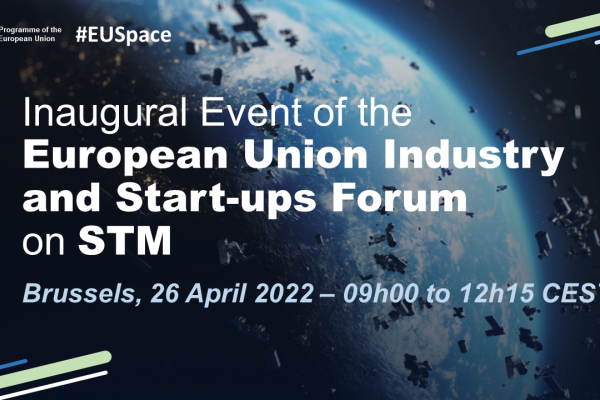
On 26 April 2022 DG DEFIS launched the European Union Industry and Start-ups Forum on STM (EISF) in close collaboration with the European Space Surveillance and Tracking (EU SST) Consortium.
- Regulation (EU) 2021/696
- Joint Communication: An EU Approach for Space Traffic Management
- Fair and sustainable use of space (Council Conclusions of Swedish Presidency (2023)
- EU approach to space traffic management (Council Conclusions of French Presidency (2022)
- An EU approach for Space Traffic Management (European Parliament Resolution (2022)



